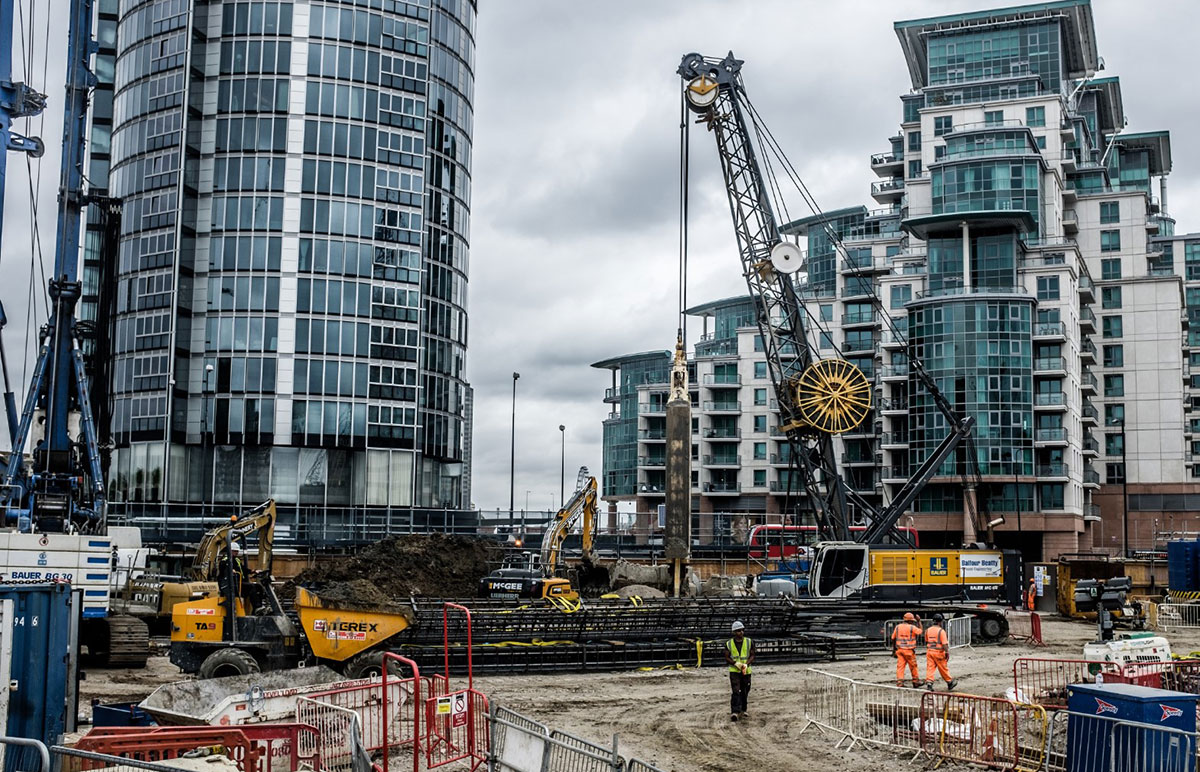Excitement About Geotheta
Excitement About Geotheta
Blog Article
The Greatest Guide To Geotheta
Table of ContentsOur Geotheta DiariesSome Known Questions About Geotheta.All About GeothetaThings about GeothetaGeotheta Can Be Fun For Everyone

They conduct website examinations, accumulate examples, carry out research laboratory examinations, and analyze data to assess the viability of the ground for construction jobs - Engineer of Record. Based upon their findings, geotechnical engineers provide suggestions for foundation design, slope stability, retaining structures, and reduction of geotechnical dangers. They work together with various other experts, such as architects, architectural designers, and construction groups, to ensure that geotechnical considerations are integrated right into the total task layout and execution
By assessing the behavior and homes of soil and rock, they can identify prospective geotechnical dangers such as landslides, soil negotiation, or slope instability. Their know-how aids prevent failings or crashes that can jeopardize lives and home. Right here are some comprehensive responsibilities and obligations of a geotechnical engineer: Website Investigation: Geotechnical designers conduct website examinations to gather information on subsurface conditions.
They interpret the data to understand the properties and actions of the soil and rock, including their stamina, permeability, compaction characteristics, and groundwater conditions. Geotechnical Evaluation and Design: Geotechnical designers examine the information collected throughout website examinations to evaluate the stability and viability of the site for building and construction projects. They do geotechnical computations and modeling to evaluate variables such as bearing ability, settlement, incline security, side earth stress, and groundwater circulation.
3 Simple Techniques For Geotheta
Foundation Layout: Geotechnical designers play a critical role in developing structures that can safely sustain the intended framework. They evaluate the soil problems and lots demands to figure out the proper foundation type, such as superficial foundations (e.g., footings), deep structures (e.g (https://giphy.com/channel/geotheta)., stacks), or specialized strategies like dirt improvement. They consider variables such as negotiation limitations, birthing capability, and soil-structure interaction to establish optimum foundation layouts
They review building plans, monitor site activities, and carry out field inspections to verify that the style suggestions are followed. If unforeseen geotechnical concerns develop, they examine the scenario and give recommendations for removal or adjustments to the layout. Threat Analysis and Mitigation: Geotechnical designers evaluate geotechnical dangers and dangers connected with the project website, such as landslides, liquefaction, or dirt disintegration.

Cooperation and Interaction: Geotechnical engineers function closely with other specialists associated with a task, such as architects, structural designers, and building and construction teams. Reliable communication and cooperation are crucial to incorporate geotechnical factors to consider right into the general project style and construction process. Geotechnical designers provide technical know-how, answer questions, and make certain click now that geotechnical needs are met.
Get This Report about Geotheta
Right here are some kinds of geotechnical designers: Structure Engineer: Structure engineers concentrate on developing and evaluating structures for frameworks. They examine the soil conditions, tons requirements, and website features to identify the most appropriate foundation kind and design, such as shallow foundations, deep foundations, or specialized techniques like stack foundations.
They assess the variables affecting slope stability, such as dirt homes, groundwater problems, and slope geometry, and develop strategies to avoid incline failures and reduce dangers. Quake Engineer: Earthquake engineers concentrate on examining and developing frameworks to stand up to seismic forces. They assess the seismic hazard of a site, examine soil liquefaction potential, and establish seismic design standards to make certain the safety and security and strength of structures during earthquakes.
They do area testing, gather samples, and evaluate the collected information to characterize the dirt residential or commercial properties, geologic developments, and groundwater conditions at a website. Geotechnical Instrumentation Engineer: Geotechnical instrumentation engineers concentrate on surveillance and measuring the behavior of dirt, rock, and frameworks. They install and keep instrumentation systems that check aspects such as soil settlement, groundwater levels, slope motions, and structural variations to analyze performance and offer very early cautions of prospective issues.
Some Known Details About Geotheta
They perform tests such as triaxial tests, loan consolidation tests, direct shear examinations, and leaks in the structure examinations to gather information for geotechnical evaluation and layout. Geosynthetics Engineer: Geosynthetics designers focus on the design and application of geosynthetic materials, such as geotextiles, geogrids, and geomembranes. They use these products to enhance soil stability, reinforce slopes, supply drain options, and control disintegration.
They often tend to be investigative individuals, which suggests they're intellectual, introspective, and curious. They are interested, methodical, logical, analytical, and logical. Some of them are additionally social, implying they're kind, generous, cooperative, individual, caring, practical, understanding, skillful, and friendly - Consulting Engineers.
In the workplace atmosphere, geotechnical engineers utilize specialized software devices to carry out estimations, produce layouts, and evaluate information. They prepare records, testimonial task specs, interact with customers and staff member, and coordinate job tasks. The workplace setup offers a favorable atmosphere for study, analysis, and cooperation with other specialists associated with the job.
Not known Facts About Geotheta
They regularly check out job websites to carry out site examinations, evaluate geotechnical problems, and collect information for analysis. These visits include traveling to various locations, often in remote or difficult surfaces. Geotechnical engineers may do soil sampling, conduct tests, and display building tasks to make sure that the geotechnical aspects of the job are being executed appropriately.
Geotechnical designers also work in specialized geotechnical research laboratories. In these facilities, they perform experiments, do examinations on dirt and rock examples, and examine the engineering homes of the products. Geotechnical laboratory engineers function thoroughly in these atmospheres, managing screening tools, operating instruments, and videotaping information. They collaborate with various other research laboratory team to ensure exact and dependable testing outcomes.
Report this page